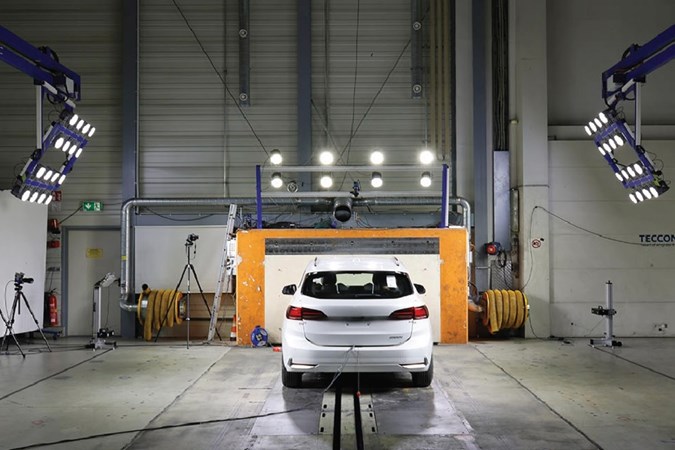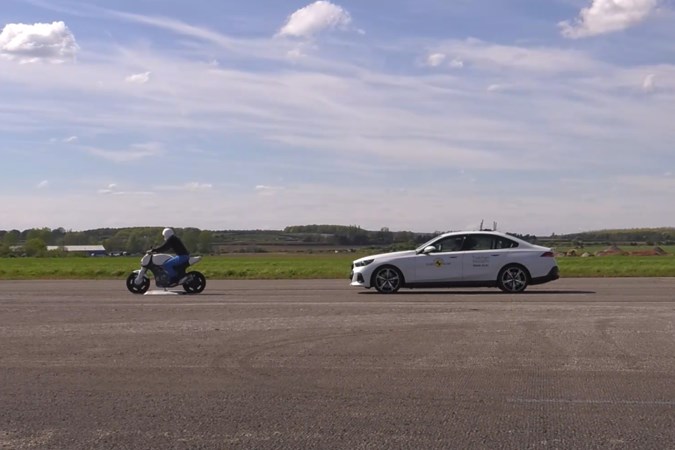Look at most car reviews on the Parkers website and you’ll see reference to the car’s Euro NCAP rating in the safety section. Euro NCAP assesses the safety of most new cars sold in the UK and its ratings are often crucial to a car buying decision.
But what exactly is Euro NCAP, how does it assess cars and what do its ratings actually tell you about the safety of a car? In this article, we’re going to answer those questions and explain some of the nuances behind Euro NCAP ratings to help you understand what they mean.
How did Euro NCAP get going?
The European New Car Assessment Program was founded in 1996. It was the product of a desire by the European Union to improve car safety. While all cars sold in the European Union have to meet certain legal standards for crash safety, those standards were fairly low and the manufacturers effectively self-certified their compliance.
An independent body – not funded by the car industry – applying proper scientific rigour to the testing process was needed. That’s the role Euro NCAP was formed to fill. A group of big-selling superminis were the first cars put to the test in early 1997 and the result were, quite frankly, horrifying. The Rover 100 performed so badly it was withdrawn from sale shortly after. You can see why in the video below.

Throughout the rest of the 1990s, Euro NCAP consistently showed the discrepancy between how safe manufacturers said their cars were, and how they stood up to crash testing designed to reflect real world scenarios. The car buying public quickly caught on and the industry had to respond. Manufacturers started designing cars around Euro NCAP’s criteria and, in 2001, the second-generation Renault Laguna received the first full five-star rating.
Car safety has improved massively over the course of the 21st Century, and Euro NCAP has been a key force in driving it. The assessment criteria have tightened as technology and legislation changed, and the testing now encompasses a lot of the ‘passive’ and ‘active’ safety features cars are now fitted with. NCAP has expanded beyond Europe, as well, operating in other regions under the Global NCAP banner.

How does Euro NCAP testing work?
Think about car safety testing and you immediately go to crashes – and they’re a vital part of Euro NCAP’s work. Multiple crashes into moving and stationary objects are staged. A network of sensors and high-speed cameras capture the forces involved, crash test dummies record data on injuries the occupants might sustain. Every part of the car’s wreckage is measured.
But the testing goes well beyond that. Seats are tested for whiplash protection, bonnets for pedestrian protection. The effectiveness of a huge range of safety systems from seatbelt warnings to autonomous emergency braking are assessed. The video below shows the tests as applied to the Ford Explorer:

Euro NCAP anonymously buys most of the cars it tests, though some are provided by the manufacturer. A mid-range trim level is always chosen; if there’s an optional package of safety features available, NCAP assesses models with and without it.
Once all the data has been collected, the numbers are crunched and the car’s safety ratings are settled and published. Which brings us to the next question.
What do Euro NCAP safety ratings mean?
Each car that Euro NCAP assesses is given a star rating from zero to five. It grabs the headlines and certainly gives a strong indication of how safe the car is. But there’s a lot of nuance behind the headline.
The latest rating system breaks down into four sections: adult occupant protection, child occupant protection, vulnerable road user protection and safety assists. For each section, the car gets a percentage score out of 100. Check out the scores for the Audi Q6 e-tron; click on the down arrow next to each score and you’ll see more information about how the car performed in the tests relevant to that section.
You can learn a lot from scrutinising the section scores, especially as Euro NCAP applies a weighting system that favours passive and active safety features, including driver assistance systems. And that can create some odd situations.

It’s possible for a car that provides so-so crash protection to gain a five-star rating because its safety features work faultlessly. But it’s not possible for a car that provides exemplary crash protection to get five stars if its safety features aren’t up to the mark.
Take the case of the Dacia Jogger. It’s crash protection alone would probably earn a three-star rating – not great but hardly unsafe. But, because it doesn’t have a seatbelt warning system for the third row of seats, the maximum rating available to it is one star. So that’s what it has.
It’s also often the case that a car will be given two ratings – one with an optional package of safety features and one without. They probably have identical crash test scores, but the safety features can add one or two stars to the rating.
Do I need to pay attention to Euro NCAP scores?
Yes. Arguably now more than ever. It used to be a real achievement for a car to score a five-star rating, and manufacturers would draw attention to it. But it was easy to understand what that rating meant when Euro NCAP was only doing crash tests.

Now, there’s so much more involved in determining a rating that you have to look at the section scores to truly understand what’s going on with a particular car. It’s often the case that a car will be given two ratings – one with an optional package of safety features and one without. If you want to make sure you get a five-star car, you’ll have to get the right model.
It’s more research to do but it’s a worthwhile exercise, especially if you’re shopping for a family car. Fortunately, Euro NCAP has a very user-friendly website.
Just so you know, we may receive a commission or other compensation from the links on this website - read why you should trust us.






